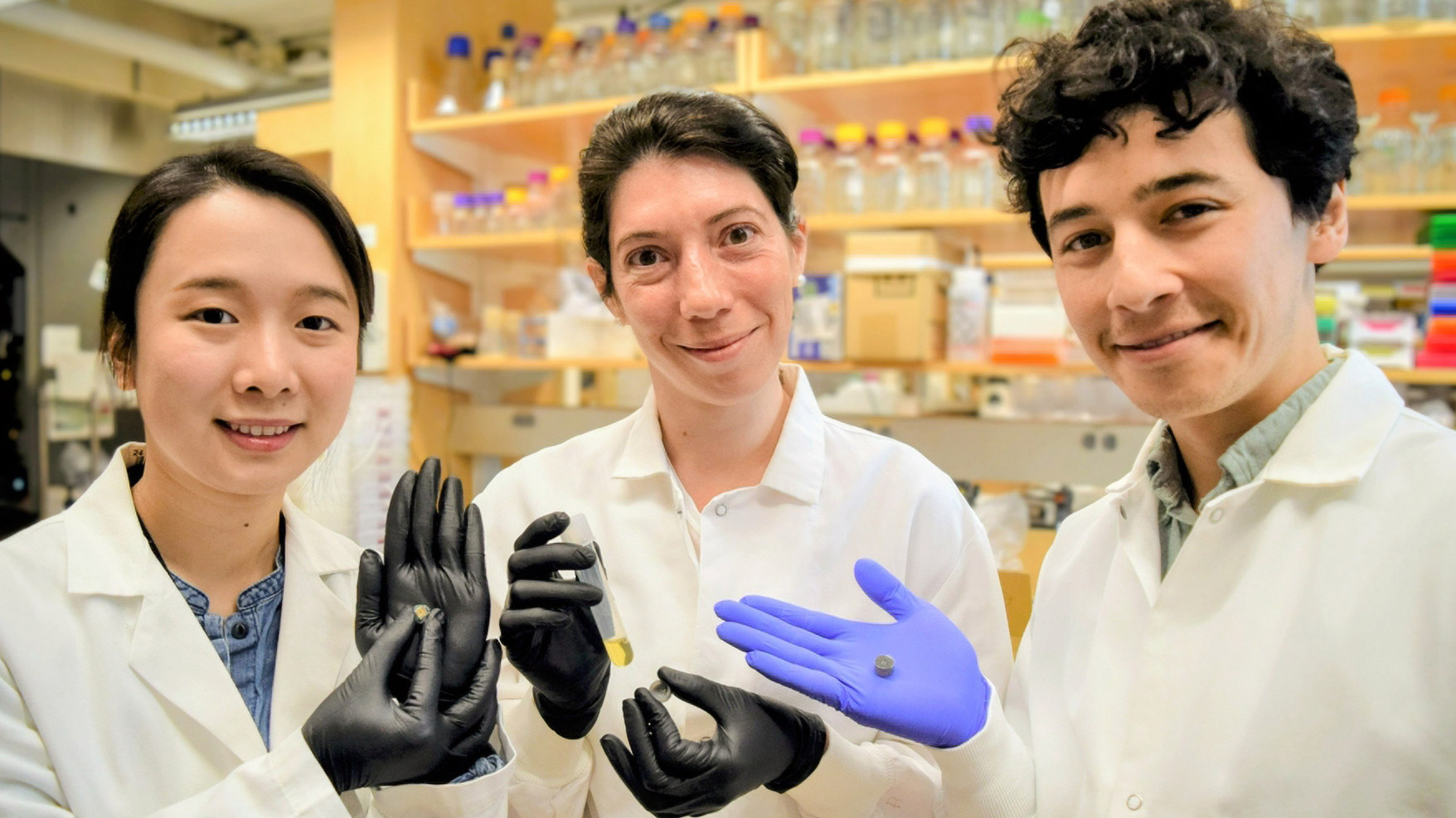A smart pill to track IBD
The ingestible device combines engineered bacteria with low-power electronics to monitor gut inflammation in real time.

Roughly 7 million people around the world cope with inflammatory bowel diseases like colitis or Crohn’s, and current diagnostic techniques make monitoring and treating them a challenge. But a “smart pill” developed by researchers from MIT, Boston University, and elsewhere could be a game changer.
The pill, which is the size of a blueberry and safe to swallow, can automatically detect key indicators of IBD and makes it possible to track them in real time. Living bacteria enclosed in it have been engineered to produce light when they encounter certain biological molecules such as nitric oxide and byproducts of gut sulfur metabolism, all of which mediate or are linked to intestinal inflammation. These are often short-lived, so they are hard to detect with current techniques such as colonoscopy, which are also much more invasive.
Once the bacteria light up, electronics within the pill convert that light into a wireless signal that can be transmitted to a smartphone or computer as it travels through the gut. The researchers showed that the bacteria could not only detect nitric oxide but distinguish between different concentrations of it, a key to catching an inflammatory flare-up before symptoms begin.
The pill, which has been tested in pigs, could also be tweaked to detect other biomarkers and help scientists understand the gut microbiome or develop other health monitoring techniques.
Currently, the gut is like a black box, says Maria Eugenia Inda, an MIT postdoc who reported the results in August together with MIT research scientist Miguel Jimenez; associate professors Timothy Lu ’03, MEng ’03, PhD ’08, and Giovanni Traverso are among the senior authors. “We still don’t fully understand it because it’s difficult to access and study. We lack the tools to explore it,” she says. “Knowing more about the gut chemical environment could help us prevent disease by identifying factors that cause inflammation before the inflammation takes over.”
Keep Reading
Most Popular
10 Breakthrough Technologies 2024
Every year, we look for promising technologies poised to have a real impact on the world. Here are the advances that we think matter most right now.
Google DeepMind used a large language model to solve an unsolved math problem
They had to throw away most of what it produced but there was gold among the garbage.
The worst technology failures of 2023
The Titan submersible, lab-grown chicken, and GM’s wayward Cruise robotaxis made our annual list of the worst in tech.
AI for everything: 10 Breakthrough Technologies 2024
Generative AI tools like ChatGPT reached mass adoption in record time, and reset the course of an entire industry.
Stay connected
Get the latest updates from
MIT Technology Review
Discover special offers, top stories, upcoming events, and more.